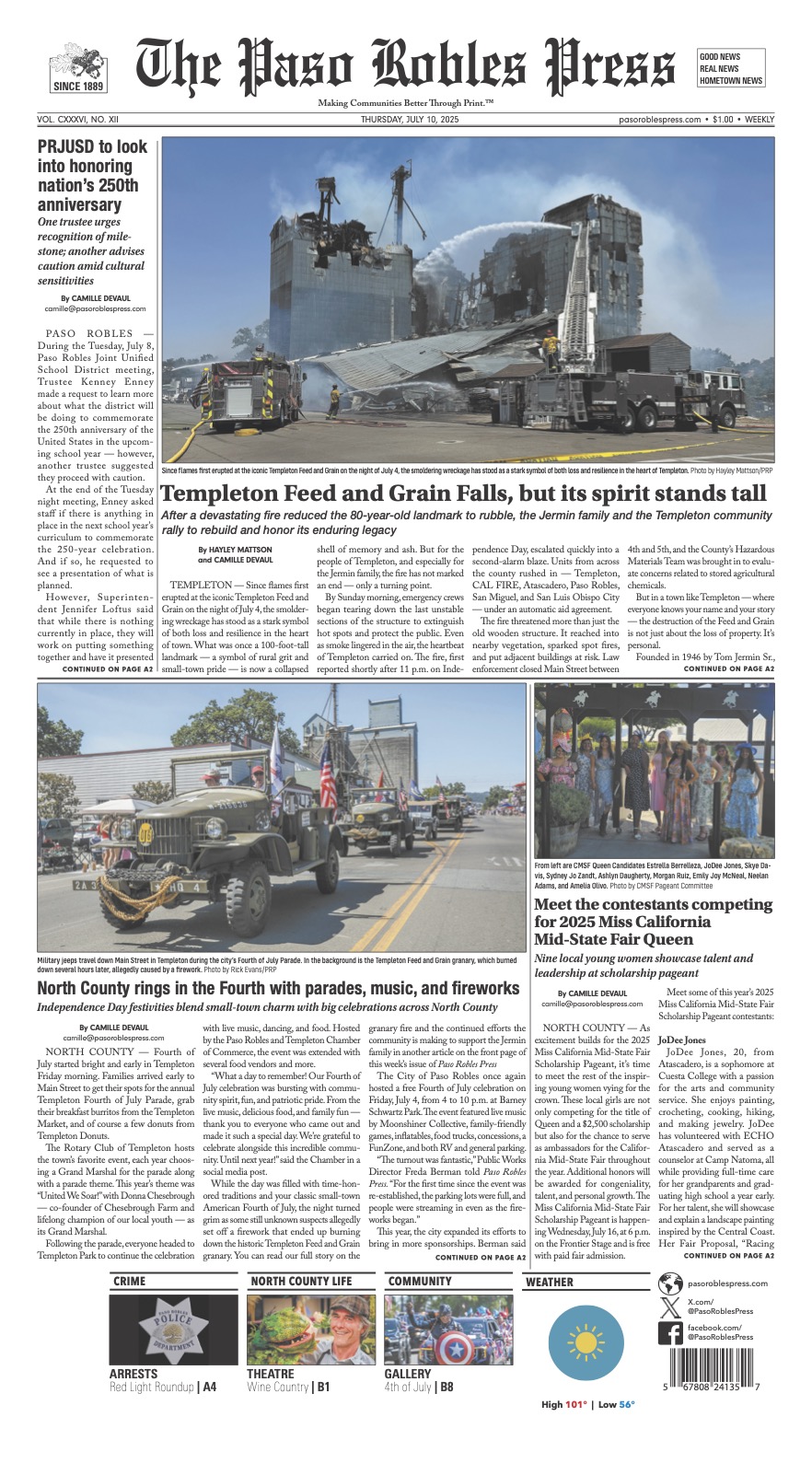GROUNDBREAKING SET FOR SPRINGTIME IN 2018
 A prime commercial corner lot in Paso Robles has been revived for groundbreaking in 2018 following recent building project approval by the Paso Robles Planning Commission. The 2.42-acre parcel at 944 Pine Street sat dormant since Hayward Lumber closed its doors to concentrate on business holdings in San Luis Obispo, but will soon become a downtown destination known as Hotel Ava.
A prime commercial corner lot in Paso Robles has been revived for groundbreaking in 2018 following recent building project approval by the Paso Robles Planning Commission. The 2.42-acre parcel at 944 Pine Street sat dormant since Hayward Lumber closed its doors to concentrate on business holdings in San Luis Obispo, but will soon become a downtown destination known as Hotel Ava.
Building demolition — to provide a clean slate for redefined vision — is scheduled for next year, according to owner and Project Manager Debbie Lorenz. The first inception, 189,331 square foot Pine Street Promenade, was a comparatively grander project approved by the Planning Commission in 2014 — designed as a Tuscan-influenced hotel, restaurant facilities, performing arts theater and accompanying parking complex. Hotel Ava is planned as a 105,195 square foot project is estimated to take roughly a year and a half to complete after groundbreaking.
Lorenz and business partner Brett Van Steenwyck, whose downtown properties include the Acorn Building and Odd Fellows Building (Park Ballroom), decided to revise the plan to harmonize more effectively with the surrounding area. Also referred to by the working title of Pine Street Hotel, the project was named Hotel Ava shortly after the Planning Commission approved the plan in late September. Hotel “Ava” refers to Paso Robles’ regional designation as an American Viticulture Area. The goal is to honor the community’s agribusiness heritage, contributions of both pioneer families and devoted transplants and tourism industry which helps support the region.
Lorenz hopes the community will be happy with the design changes for Hotel Ava.
“I want it to be an approachable space where locals come and embrace something they can be proud of. It’s important to create something that truly adds to our Downtown,” she said.
The new design for the oblong-shaped parcel that stretches north to south has been reconfigured for a more engaging and comfortable feel. The exterior will feature brick veneer over plaster and warm stone finishes in an urban-industrial vibe. New structures will range from ground-level to four stories high. To anchor the southeast corner of 10th and Pine streets, a spacious ground-level restaurant will include a shaded, open-air rooftop bar with northern views that face Downtown and City Park.
Next to the second-story bar will be an above-ground swimming pool. Elevated at 17 feet high, the oblong pool will be surrounded by stone tile and raised planters. A total of 151 hotel rooms will take up the second, third and fourth floors in lodging of varying sizes. Balconies and larger suites will be set on the outer perimeter.
From north to south along Pine Street, a pedestrian-friendly entrance will open to a 4,780-square-foot retail space divided into smaller units.
Adjacent to the retail portion will be a 1,960 sq. ft. commercial kitchen, 1,188 sq. ft. banquet kitchen, a 2,904 sq. ft. meeting space with teleconferencing capabilities, plus operational, storage and administration buildings.
Centered within the parcel will be a tree-shaded valet-serviced entrance that leads into a sweeping interior space of 3,351 square feet, featuring a lobby and lounge seating with a two-sided fireplace. Inviting niches will be placed throughout where people can gather and converse, sit with a laptop or relax with a cup from the coffee bar. Just south of the entrance will be guest parking with 179 spaces.
Planning with a focus on sustainability
Zoned in the Uptown/Town Center Specific Plan, the prospective hotel, restaurant and retail project aligns with the existing designation as “Town Center-1” within the City’s General Plan and current Economic Strategy. Transit Occupancy Taxes collected from the Downtown location will provide monetary sustainability to the General Fund along with local employment.
Low-impact development (LID) features have been incorporated within the project design to reduce watertight surfaces. “Green” materials will promote groundwater recharge through bioretention. To help preserve area water quality, surface drainage facilities will clean pollutants before they ever reach the groundwater basin. For landscaping, graywater will be conserved and recycled.
Permeable hardscaping and fencing will harmonize with containers filled with native and drought-friendly plants and solar energy panels will be installed on rooftops. Throughout the structures, water-conserving fixtures and high-efficiency laundry and kitchen appliances will be used.
The Planning Commission also reviewed information regarding increased traffic, everyday operational noise and nighttime lighting. Like the previous large plan, they determined all less than significant impacts with no or few modifications. The Commission noted the project’s walkable proximity to Downtown, as well as the nearby Transportation Center and Amtrak train station, where traveling guests are inclined to park their vehicles or use area transit. Bicycle parking will also be made available onsite for Hotel AVA employees and guests.
Impacts to public safety services were also determined to suffer less than significant impacts. Emergency Services are located one block away at 9th and Park streets with nearby highway access. Demand for new services would not be proposed and incremental impacts would be alleviated through standard development impact fees.
Historical roots and relationships
In 2013, work began to protect five existing Valley Oak trees and one Coast Live Oak tree, which continue to receive TLC. An arborist’s study determined that the Valley oaks suffered varying degrees of damage from previous concrete paving and decomposed granite which essentially choked their critical root zones of needed moisture and oxygen. Trunk scarring was discovered, too, likely caused by lumber trucks backing into them.
“I fought for those trees and I want to see them survive and thrive,” said Debbie.
A landscape plan was designed to protect the decades-old trees from further harm and enhance their health. Meticulous hand-digging, low-impact tractors and safe construction methods will reduce potential harm to nearby root systems. Additional trees will also be planted on the property.
“Historical connection and neighborliness are important to me. The relationship to our train station is part of that,” said Debbie. “I think it was important to change the design from a Tuscan theme to accomplish these things and bring a sense of who we are to the project. Not only is it important to pay homage to our heritage, we need our younger generations to be excited about Paso so that they will choose to remain here and keep our town alive and vibrant.”












